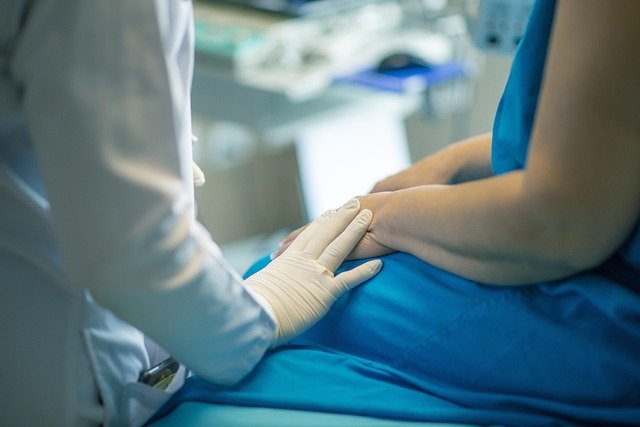Rhinoplasty Explained: Art, Science, and Recovery
Rhinoplasty — often called a nose job — blends aesthetic skill with medical precision to reshape the nose and improve breathing. This detailed guide explains why people choose rhinoplasty, what to expect before, during, and after surgery, recovery timelines, risks, and cost considerations to help you decide with confidence.

Rhinoplasty is a surgical procedure that reshapes the nose to enhance facial balance or restore proper nasal function. Whether pursued for cosmetic refinement or to correct breathing problems, it requires careful planning, surgical expertise, and realistic expectations. Below is a clear overview of why people choose rhinoplasty, how the treatment proceeds, what recovery looks like, potential complications, and typical costs.
Why people choose rhinoplasty
Individuals seek rhinoplasty for both appearance and function. On the aesthetic side, common concerns include a nasal hump on the bridge, a rounded or drooping tip, overly wide or narrow nostrils, or asymmetry following trauma. Many patients pursue surgery to improve facial balance and boost self-confidence.
Functionally, rhinoplasty can correct structural problems that impede airflow. A deviated septum, enlarged turbinates, or scarring from injury can lead to chronic nasal obstruction, snoring, and reduced quality of life. In such cases, a functional rhinoplasty addresses both form and function. Other reasons include repair of birth defects or reconstructive needs after accidents.
The choice to undergo rhinoplasty is personal and often motivated by a desire for improved appearance, better breathing, or both. Surgeons typically evaluate each patient’s goals and anatomical issues to recommend the most appropriate approach.
What to expect during consultation and surgery
The journey starts with a detailed consultation with a board-certified plastic surgeon or facial plastic surgeon. During this visit you and the surgeon will discuss goals, medical history, medications, and prior nasal injuries or surgeries. Many practices use digital imaging to simulate possible outcomes and align expectations.
If you move forward, you will receive preoperative instructions, which may include avoiding certain medications, stopping smoking, and arranging transportation for the day of surgery. Rhinoplasty is most commonly performed under general anesthesia, though some cases use sedation with local anesthetic.
Surgical technique varies: closed rhinoplasty uses incisions inside the nostrils, while open rhinoplasty includes a small incision on the columella to allow greater access for complex reshaping. Procedures typically last one to three hours depending on complexity. After surgery, surgeons often place a splint or cast to support the new nasal contours and may use internal packing or dissolvable tapes to control bleeding and swelling. Most people go home the same day with a friend or family member to assist during the first night.
Recovery timeline and expectations
Recovery from rhinoplasty is progressive. The first week is the most noticeable: swelling, bruising around the eyes, and some discomfort are common. Many patients return to work or school within 7 to 10 days once major swelling and visible bruising have diminished. The external splint and any external sutures are usually removed at about one week.
Although the bulk of swelling improves within the first month, subtle swelling—especially at the nasal tip—can persist for many months. The final, refined result often takes up to a year as soft tissues settle and scar tissue remodels. During recovery, patients should avoid heavy lifting, contact sports, and any activity that risks nasal trauma for several weeks to months as advised by the surgeon. Regular follow-up visits allow the surgical team to monitor healing and address concerns promptly.
Potential risks and complications
As with any surgery, rhinoplasty carries risks. These can include infection, bleeding, adverse reactions to anesthesia, and unsatisfactory cosmetic outcomes. Patients may experience temporary numbness, altered skin sensation, breathing difficulties, or visible scarring in rare cases. Some individuals require a secondary or revision rhinoplasty to refine results or correct functional problems.
Selecting a highly trained, experienced surgeon reduces the likelihood of complications. During the consultation, your surgeon should explain potential risks, the likelihood of revision, and how complications would be managed. Closely following pre- and post-operative instructions also lowers risk.
Cost considerations and financing
Rhinoplasty cost varies widely depending on the surgeon’s expertise, geographic location, facility fees, anesthesia costs, and the procedure’s complexity. In the United States, typical total costs often fall between $5,000 and $15,000, though individual quotes can differ significantly. If the procedure is performed primarily to improve breathing or correct a structural defect, part of the cost may be covered by health insurance.
| Provider Type | Average Cost Range | Factors Influencing Cost |
|---|---|---|
| Board-Certified Plastic Surgeon | $6,000 - $15,000 | Surgeon experience, practice location, case complexity |
| Facial Plastic Surgeon | $5,000 - $12,000 | Specialization, reputation, facility fees |
| General Plastic Surgeon | $4,000 - $10,000 | Experience with nasal surgery, geographic area |
Prices, rates, or cost estimates mentioned in this article are based on commonly reported figures and may change over time. Independent research and consultation with providers are advised before making financial decisions.
Many practices offer payment plans or financing to help spread the cost. Crucially, price should not be the only factor when choosing a surgeon; board certification, experience with rhinoplasty, and a proven track record remain the most important considerations.
This article is for informational purposes only and should not be considered medical advice. Please consult a qualified healthcare professional for personalized guidance and treatment.






